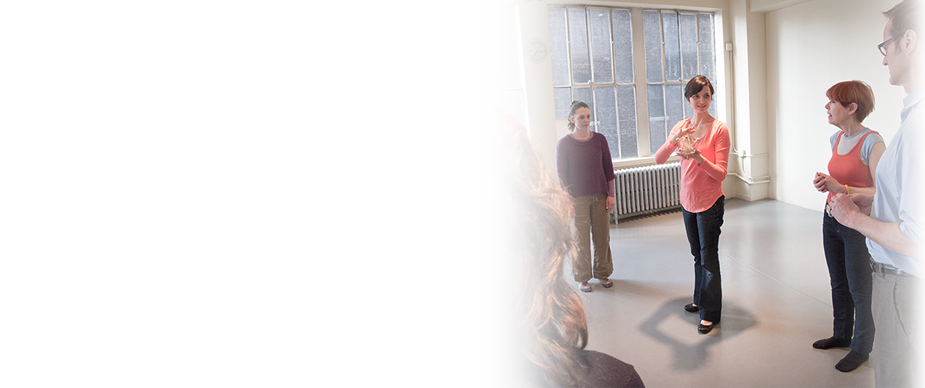How Mindfulness Affects Your Posture
/What comes to mind when you hear the term, "mindfulness"? Before reading further, take a moment to think about what it means. Perhaps make a mental note or jot down a few words that you associate with it. Let's call this being mindful about your assumptions about the word "mindfulness". Notice your associations. Don't just them or come up with a right answer. How did you feel and what came up when you saw the word "mindful" in the title of this post? Why did you decide to click on the post and read further?
I will get to the point of this post soon...how mindfulness affects your posture but first, let's define "mindfulness". Ellen Langer, who has been researching mindfulness since 1970, defines it as "the very simple process of noticing new things" and calls it "the essence of engagement." She also points out that people often confuse mindfulness with "effortful thinking and stress" or with the act of meditation, whereas meditation is a means of developing mindfulness.
I'm concentrating really hard on being mindful, but i feel really tense!
If mindfulness is simply noticing, it's often this simple thing that evades us. When examining concerns regarding posture, many people want to change their posture, but may not be certain of what they are doing to cause the problem in the first place. Part of figuring that out and changing it starts simply with noticing and this is where The Alexander Technique comes in really handy. In lessons, the teacher guides you with their hands, so that you can sense your body and how you're holding it more accurately and then as you start to notice the habits, you also learn how to undo them and establish better postural habits.
If an important step to changing your posture is to first notice how you're making the "poor" posture happen in the first place. At first, you may spend some time simply noticing your body. I don't mean checking out your waistline in the mirror. I mean actually sensing your whole body. This sense is called proprioception. Our sense of proprioception helps us understand where we are in space, allows us to sense where are limbs are, helps us gauge the amount of effort we need to do something, and includes balance. To improve your posture, you need to sharpen this sense, which is exactly what Alexander Technique lessons and practicing this sort of mindfulness on your own do.
Take a moment and take note of where in your body you most sense yourself. Many people who are just starting Alexander Technique lessons come into their first lesson telling me that most of the time they are only sensing clearly from the shoulders up and they aren't fully conscious in their whole body. They may say that they have very little awareness of their backs.
Try this:
Sit in a chair with a back and sit all the way back with your feet on the floor.
Notice where you are most aware in your body. After taking note of that, bring your attention to your back on the back of the chair.
Then bring your attention to your sit-bones (to knobby points at the base of the pelvis) on the seat of the chair.
Notice your feet on the floor.
Bring your awareness to the top of your head. To better sense the very top of your head, tap it or scratch it a bit and then notice the lingering sensation. It is common that people sense clearly about up to eye level and that the 3-4 inches above the eyes is kind of vague. If you want to improve your posture, you'll want to come up to your full height, and in order to do so, it's pretty important to be able to notice the top of your head.
After noticing your back on the back of the chair, sit-bones on the bottom of the chair, feet on the floor and top of the head a few times, take note of where you are most aware in your body. Can you sense your whole body more fully? If so, how did you do that? Did you do it by moving or creating any muscular effort? If you followed the instructions, you just did it by noticing (with a little help from your finger to tap the top of your head).
Now that you've noticed where you are, take a moment to notice two things outside of yourself. Notice something that you see and something that you hear. As you take in these stimuli, do you stop noticing where you are? If so, go back to the areas that you focused on and see if you can continue noticing them while noticing what you see and hear. If you can do this, you are beginning to learn how you can stay present and focused on activities, other people, and what's going on around you, while still noticing how you are holding your body and not letting that more internal noticing distract you.
Ellen Langer's recent article in the Harvard Business review is aptly titled "Mindfulness Isn't Much Harder than Mindlessness". The effort you are employing to improve your posture may be excessive and possibly worsening the problem. If you've been trying very hard to hold yourself up straighter to improve your posture, it's likely that you find your efforts uncomfortable and perhaps even painful. You might pull your shoulders back and lift your chin and chest, which likely leads you to feel stiff and like you're not breathing fully. Stop trying and start by noticing. Take Alexander Technique lessons to turn up the volume on your noticing skills and learn how to stay upright in a natural, comfortable way.
Check out my audio guide for "Constructive Rest", a daily practice for learning to be mindful in your body.


